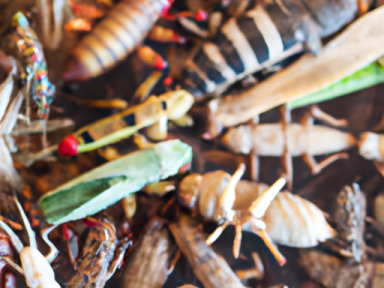
Edible Insects and Their Harvest
In today’s uncertain world, being self-reliant and prepared for any situation is more important than ever. One area that often gets overlooked when it comes to food security is the potential of edible insects. While the thought of eating bugs may seem unappetizing to some, the truth is that insects can be a valuable and sustainable source of nutrition in a survival situation. In this article, we will explore the nutritional benefits of edible insects and how to safely harvest and prepare them.
Nutritional Benefits of Edible Insects
When it comes to survival, getting enough protein and other essential nutrients is crucial. Edible insects offer a surprising nutritional profile that can help meet these needs. In fact, many insects contain more protein per gram than traditional meat sources. They are also rich in essential fatty acids, vitamins, and minerals. For example, crickets are packed with calcium, iron, and vitamin B12. Mealworms, on the other hand, are an excellent source of fiber and omega-3 fatty acids.
In addition to their nutritional value, edible insects are also highly sustainable. Compared to traditional livestock, insects require significantly less water, feed, and space to grow. They produce fewer greenhouse gas emissions and have a much smaller ecological footprint. By incorporating insects into our diet, we can reduce the strain on our environment and promote a more sustainable food system.
Safely Harvesting Edible Insects
When it comes to harvesting edible insects, it’s essential to do so safely and mindfully. Here are a few guidelines to follow:
- Always identify insects correctly before harvesting. Some insects can be toxic or carry diseases, so it’s crucial to know what you’re dealing with.
- Select insects from clean environments, away from pesticides, chemicals, and other pollutants.
- Harvest insects during their active season to ensure they are at their best and most nutritious.
- Use appropriate tools, such as nets or traps, to catch insects without harming them or damaging their habitats.
- Avoid excessive harvesting from a single area to prevent depleting local populations.
- Practice good hygiene during handling and processing to minimize the risk of contamination.
Preparing Edible Insects
Once you have harvested your edible insects, it’s time to prepare them for consumption. Here are a few tips to help you get started:
- Clean the insects thoroughly by rinsing them with clean water.
- Some insects, such as crickets and mealworms, can be roasted or baked for a crunchy texture. Simply toss them in oil, season with your favorite spices, and place them in the oven until crispy.
- Others, like grasshoppers and caterpillars, can be stir-fried or sautéed with vegetables for a more substantial meal.
- Experiment with different recipes and flavors to find what suits your taste buds. Insects can be incorporated into a variety of dishes, from salads and soups to energy bars and protein shakes.
Remember, when trying edible insects for the first time, it’s essential to start slow and pay attention to any potential allergies or adverse reactions. While edible insects are generally safe for consumption, some individuals may have sensitivities, just like with any other food.
In conclusion, exploring the world of edible insects can open up new possibilities for self-reliance and survival. By embracing these nutritious and sustainable food sources, we can broaden our horizons, reduce our impact on the environment, and be better prepared for whatever the future holds.



GIPHY App Key not set. Please check settings